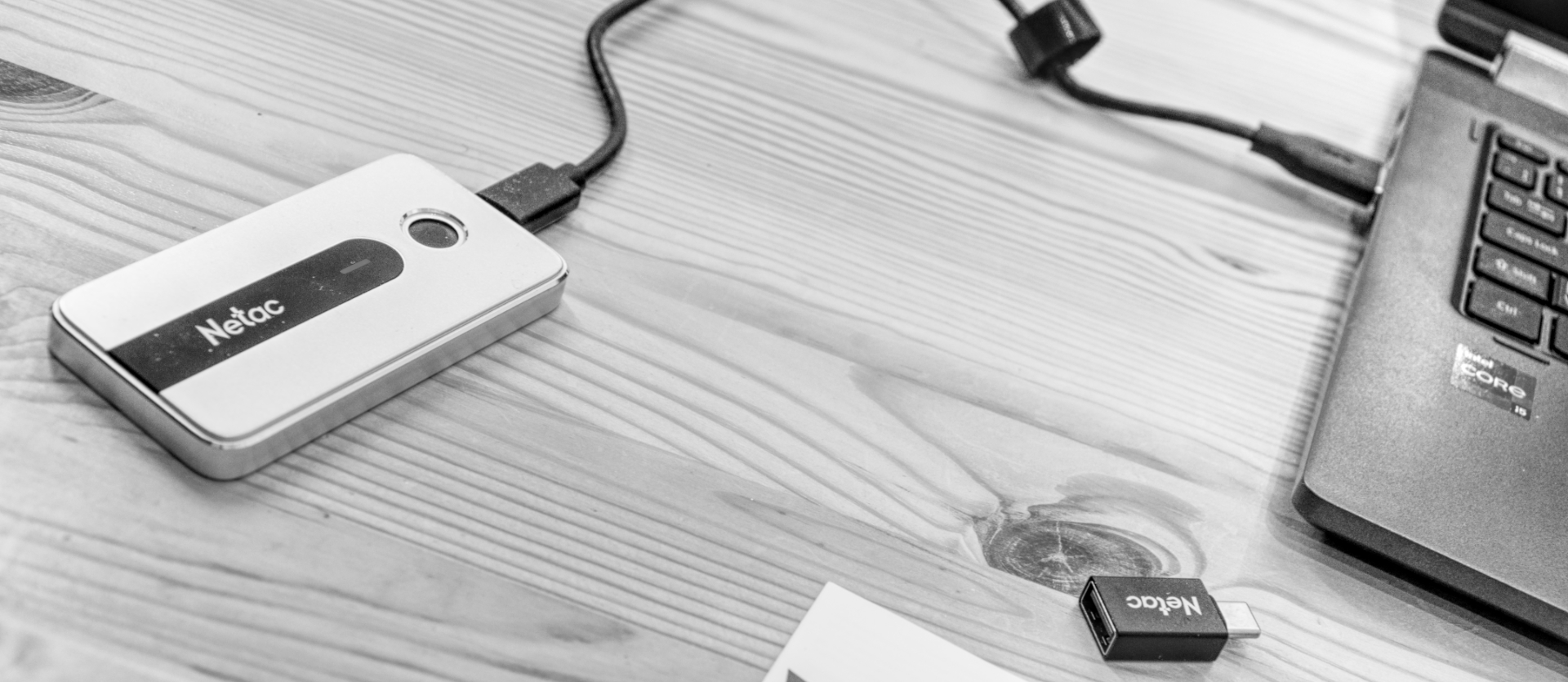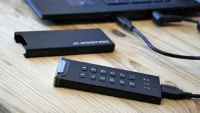TechRadar Verdict
An encrypted SSD with inbuilt biometrics sounds ideal, but the Z11 doesn’t deliver what you might have expected. While the storage device is well made and performs acceptably, the software side of this solution needs work.
Pros
- +
Well-constructed drive
- +
Biometrics
Cons
- -
Availability
- -
Software that deletes itself
- -
Only 550MB/s transfer speeds
Why you can trust TechRadar
One-minute review
The Netac Z11 is an external USB SSD made to attract those who like the idea of encrypted storage but don’t care about remembering passwords.
It’s small at just 90 x 47 x 8.5mm. Comes with a 35cm long USB cable, a carry pouch and a USB-A to USB-C adapter. Available in capacities of 250GB, 500GB or 1TB.
Pre-installed is an application to prepare the drive for encrypted use. Using this tool, you can register passwords and fingerprints that unlock the contents, and support is provided for Admin access plus an additional ten users.
What it doesn’t claim is any security standards, such as FIPS 197 certification, and we assume it used the AES hardware encryption of the SSD module inside the aluminium case.
That’s one weakness, and there are others.
Accessing the device requires the app installed on the host systems, but you can’t download this tool from the Netac website at the time of writing. You can only access it from the unused drive. Once the drive has been prepared for use, the partition that holds the software is overwritten. Failure to secure it elsewhere could be a catastrophic problem for the owner.
Netac also promotes the Z11 as USB 3.2 Gen 2 compatible and then undermines that suggestion by saying that its top speed is 550MB/s, that’s barely more than Gen 1 speed.
Sign up to the TechRadar Pro newsletter to get all the top news, opinion, features and guidance your business needs to succeed!
That performance cap hints that the Z11 is a SATA SSD, not an NVMe, which under Gen 2 would be capable of around 1,000MB/s transfer speeds.
The final issue here is availability or, rather, the complete lack of it. Despite it being given multiple web pages on the Netac site, we failed to find it for sale anywhere.
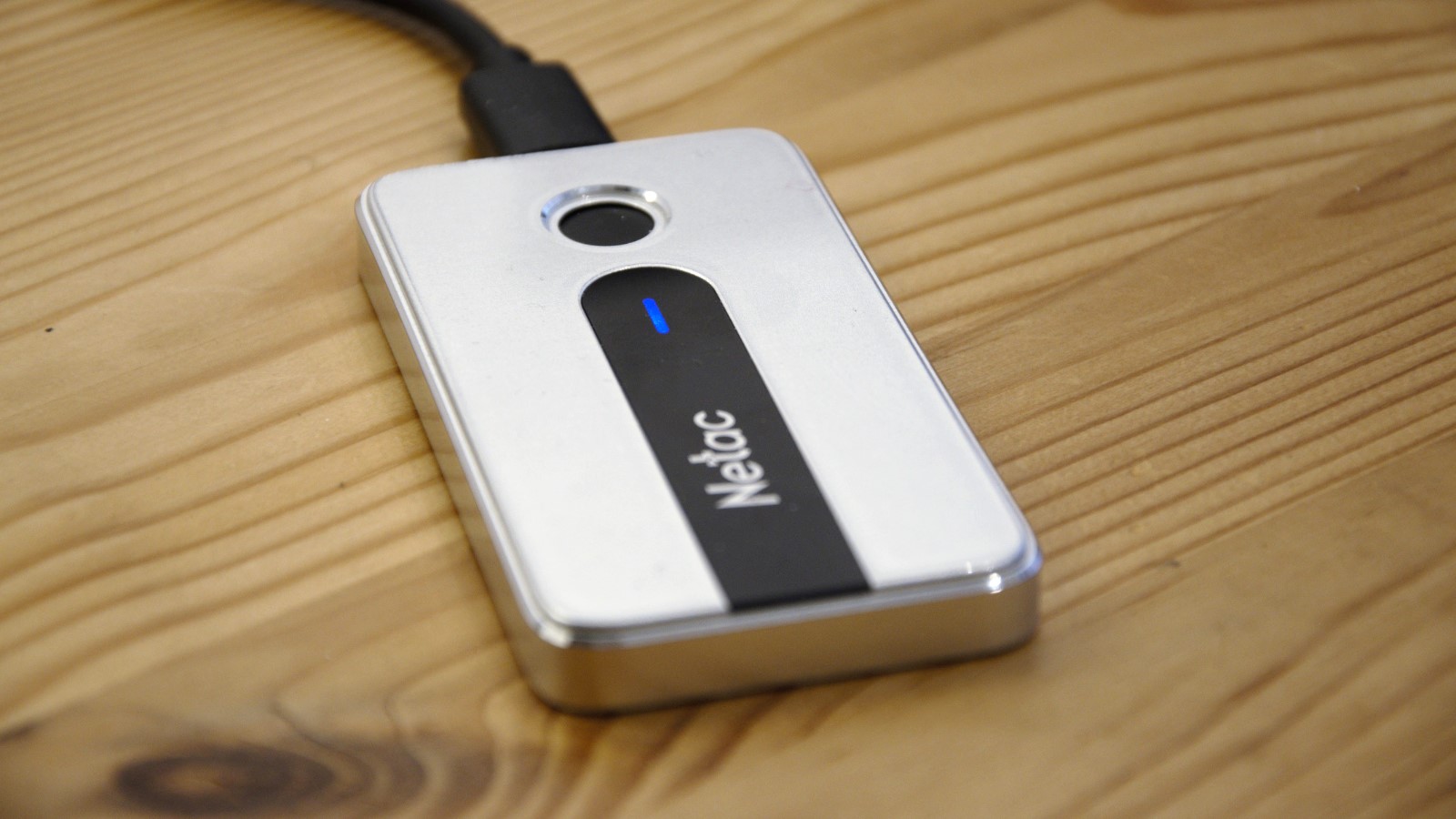
Netac Z11: Pricing and availability
- How much does it cost? $89 for 1TB model
- When is it out? Unknown
- Where can you get it? Unknown
We’d love to tell you what this drive costs and where to get it, but we can’t find it or any prices. The only hint we found was a single supplier who quoted the 500GB model for around 110 Euros, although they had no stock, and those prices might be erroneous.
Netac tells us that the official price for the 1TB model is $89. A price that seems very reasonable, if you could actually buy one for that.
Hopefully, Netac will bring this product to market in a less virtual fashion at some point.
- Value: 2 / 5
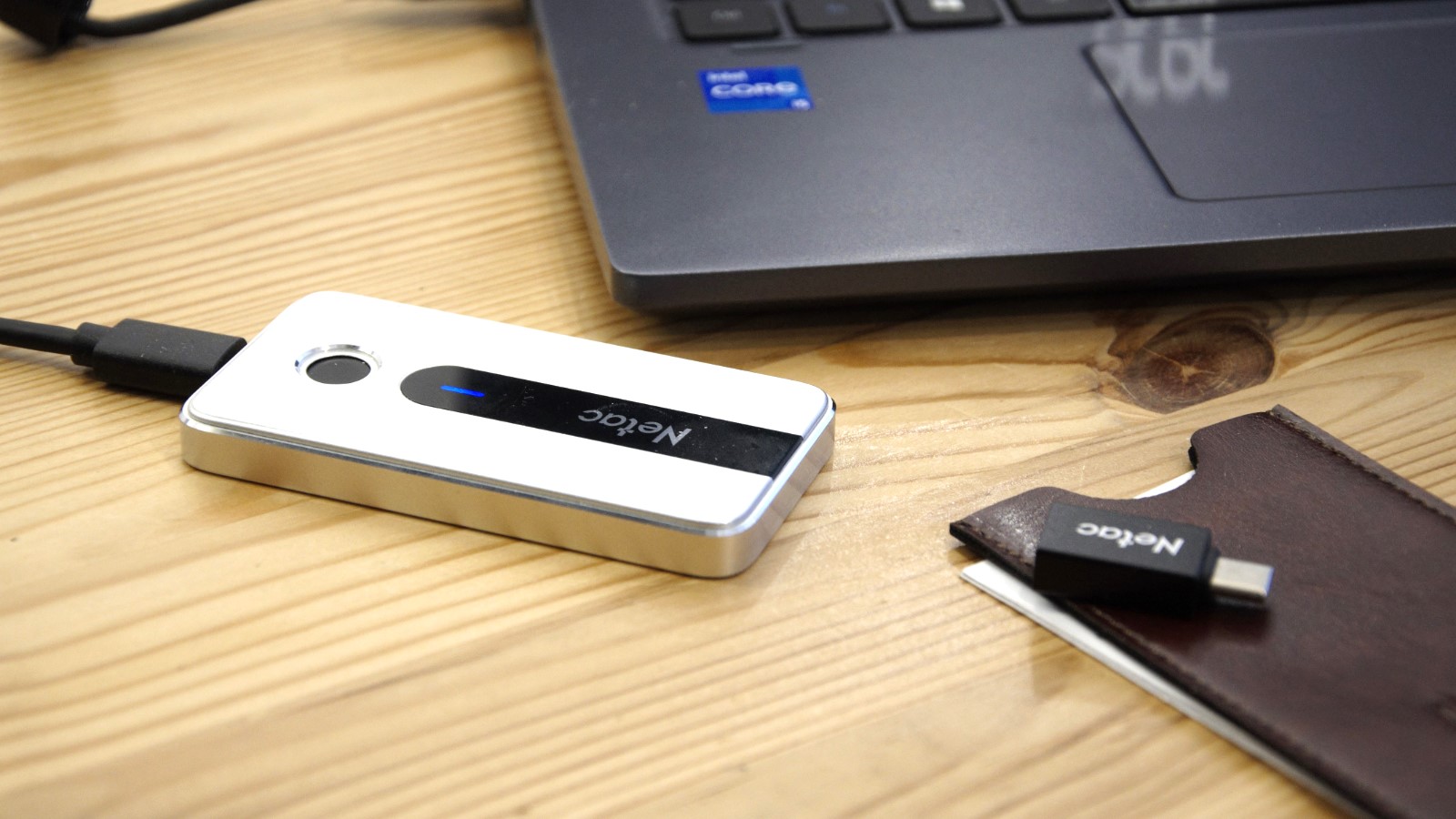
Netac Z11: Specs
| Model Tested | NT01Z11-001T-32SL |
| Capacities | 250GB/500GB/1TB |
| Capacity tested | 1TB |
| Tested sequential performance (Read/Write) | 558/489 MB/s |
| Connection | USB 3.2 Gen 2 using Type-C |
| Encryption | Hardware |
| Dimensions | 90mm x 47mm x 8.5mm (WxHxD) |
| Weight | 54g |
| Warranty | 5 years limited |
Netac Z11: Design
- Metal case
- Pouch
- USB-A and USB-C
As external SSD drives go, the Netax Z11 is nicely made. The case appears to have been milled from a block of aluminium, enabling it to radiate the heat of use easily.
At the right-hand end is a USB-C port that connects to the provided cable, and next to that is an omnidirectional fingerprint reader and an activity LED.
Included in the box is a faux leather carry pouch and a Netac branded USB-C adapter. As nice as these accessories are, the person who designed the pouch wasn’t informed about the cable or adapter. Sadly, neither fits with the drive in that pouch.
As a concept, the Z11 looks interesting, as it suggests that biometric production can be added to the drive, which it can. While the available sizes of 256GB, 512GB and 1TB aren’t stretching the boundaries of mobile storage, that’s still enough to be useful for those who want to carry sensitive documents around.
However, the Achilles heel of the Z11 is how the security is implemented and a spectacular lack of forward planning by those who made it.
But at least it supports both USB-A and USB-C out of the box.
- Design: 3 / 5
Netac Z11: Software
- Simple software
- Silly installation flaw
Insert the Z11 for the first time, and an unencrypted volume will appear with a software utility on it that can be used to configure and prepare the drive.
Whatever you do, don’t install this utility without making a copy of it to a local drive.
Why? Because when you run it, and it configures the drive for encrypted use, it obliterates the utility, and you will need to install that on any machine you wish to access the device.
We, stupidly, in retrospect, ran it from the drive, and when it had finished, we didn’t even have a copy on the machine we ran it from, incredibly.
If you assume that won’t be a problem because you can download it again from Netac, then think again. We couldn’t find it there.
We contacted Netac support and asked for a link to the software, no response yet.
The only ray of sunshine cast by Netac on the Z11 was that its SSD utility recognised the drive and informed us that we were using the latest firmware.
Overall, the software side of this equation isn’t good for end users in its current state, and we can only hope Netac addresses this moving forward.
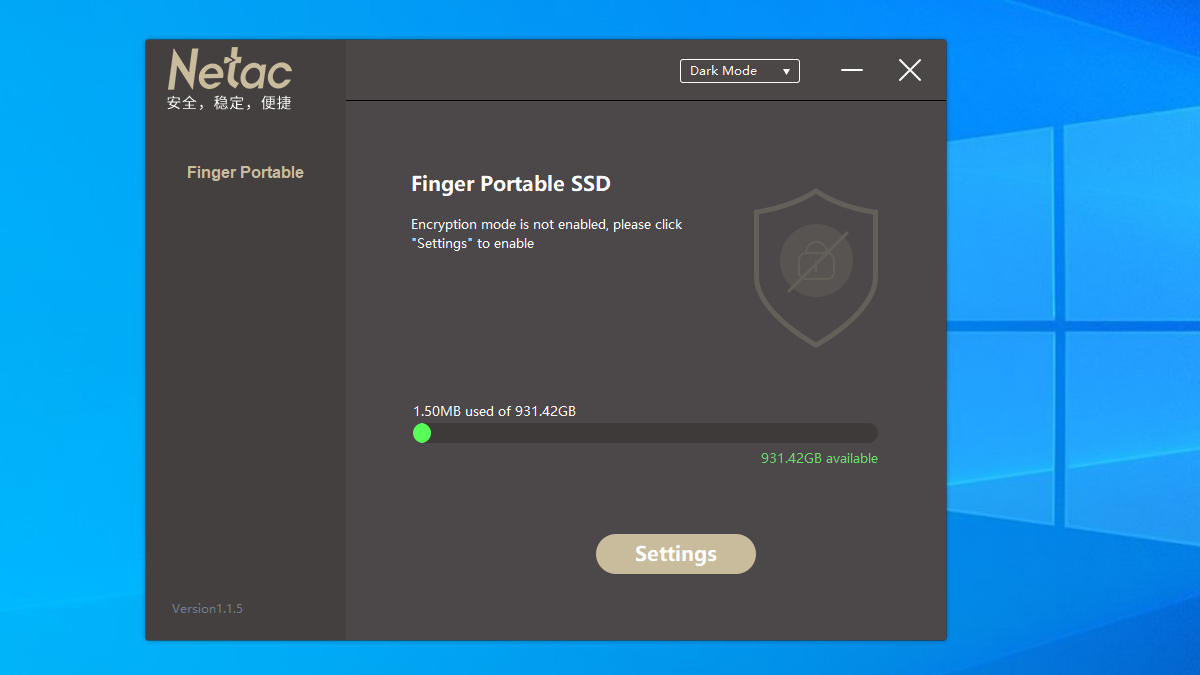
- Software: 1 / 5
Netac Z11: Performance
- SATA performance
- Hardware encryption
| Bench | Read MB/s | Write MB/s |
|---|---|---|
| AJA System | 525 | 470 |
| ATTO | 532 | 468 |
| AS SSD | 527 | 462 |
| CrystalDiskM. | 542 | 476 |
The performance of this drive is acceptable if you are happy with 550MB/s and don’t have access to Gen 2 or Thunderbolt-connected external storage.
We tested it across a range of benchmarks, and they all came up with similar numbers. These are the levels of performance we would expect from a SATA-connected SSD, and if the drive is genuinely USB 3.2 Gen 2, then most of the bandwidth is wasted.
The only redemption here is that using encryption doesn’t have a noticeable impact on speed, as the drive controller is required to do more work.
If you need to carry encrypted storage and have a plane to catch, we’d recommend either the Crucial X10 or the Kingston XS2000 instead.
- Performance: 3 / 5
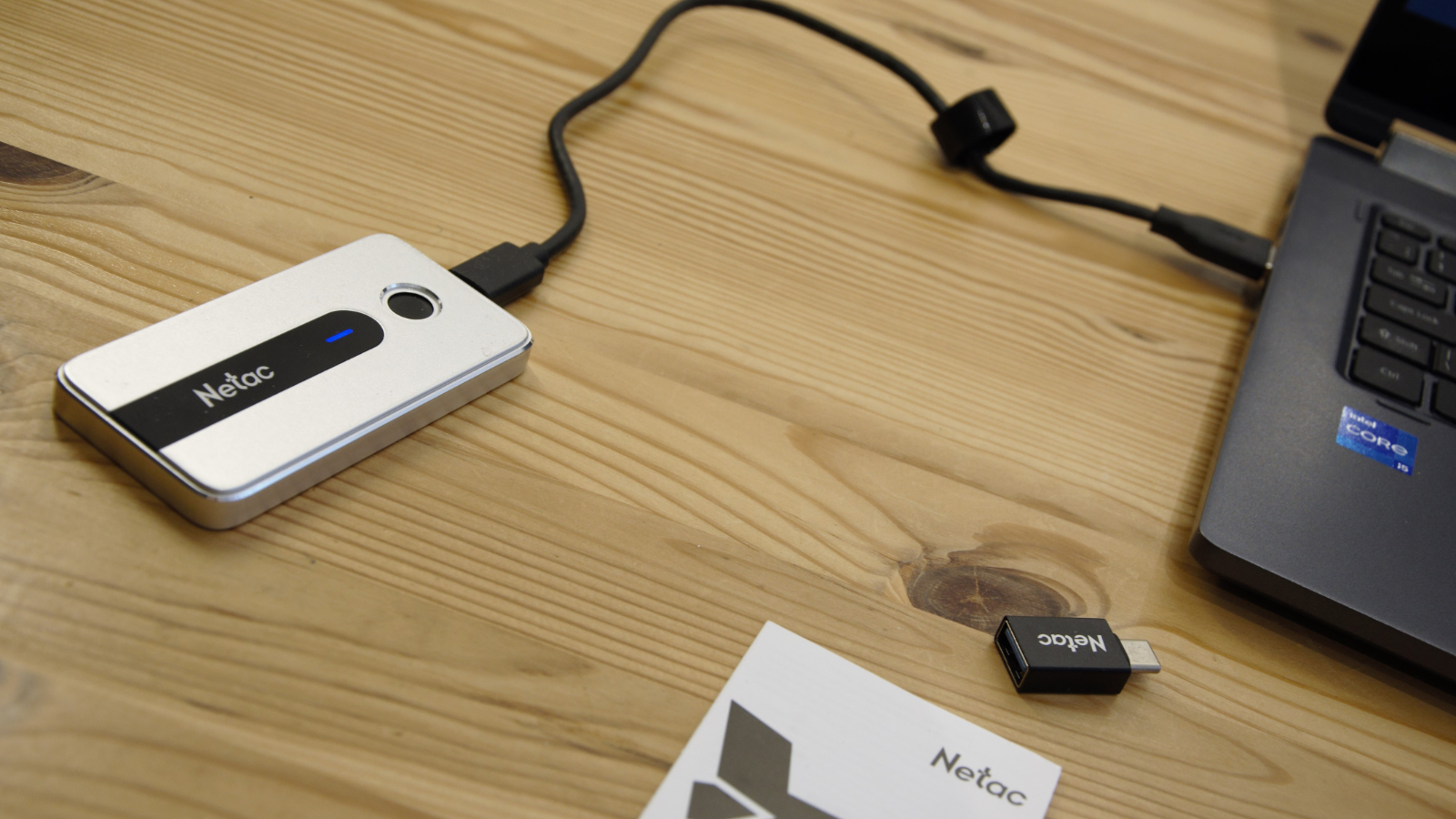
Verdict
I am not sure how to best summarise this product, as it quite clearly doesn’t appear ready for the retail market. While the concept seems plausible, the reality is that the Z11 isn’t a product that is ready to compete with the likes of iStorage or even Samsung.
When the software is more mature and doesn’t get erased after you’ve used it, then this might be an affordable choice for those who want to travel with encrypted storage.
However, that’s not where we are currently.
Should I buy the Netac Z11
| Value | Not widely available | 2 / 5 |
| Design | A well-made device, but the carry pouch doesn’t hold the cable or adapter | 3 / 5 |
| Software | This software will self-destruct | 1 / 5 |
| Performance | SATA drive performance levels | 3 / 5 |
| Overall | A product with a mile yet to go on its journey | 3 / 5 |
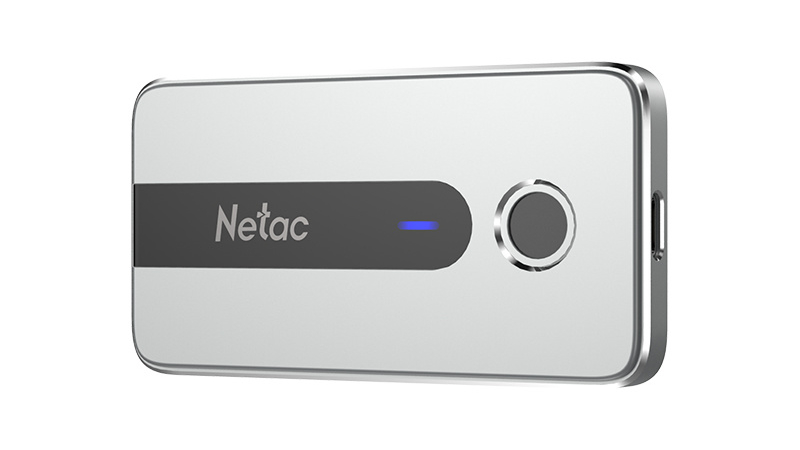
Buy it if...
You need cheap encrypted storage
If this product is released in quantity, it does provide a cheaper option than some of the other encryptable drives available. But that cost does come with the caveat of almost no encryption certifications and software that self-destructs unless you secure it elsewhere.
Don't buy it if...
You need certified security
There are standards for encrypted storage that define how difficult it would be for something to get the data out if they possessed the drive. The Z11 has none of these and instead relies on the hardware encryption of the storage device to protect the contents.
You need more than 1TB
The biggest capacity on offer is 1TB, those wanting more need to look elsewhere. (see below)
Also consider
iStorage diskAshur M²
A fully accredited solution which uses numeric pad access to avoid needing to install software onto any device you want to use it with. The problem with iStorage products is that they are expensive, but you do get what you pay for in this respect.
Check out our full review of the iStorage diskAshur M²
iStorage diskAshur M²
This drive came out in late 2021, when Gen 2x2 drives weren’t popular.
While it uses a plastic construction, it does achieve an IP55 rating and should travel well enough. It’s not cheap, but the extra expense delivers better-sustained performance and hardware encryption. It doesn’t have biometrics, but it is well made and has capacities up to 4TB and four times faster transfer speeds than the Z11.
Check out our Kingston XS2000 review
We've covered all the best external SSDs here for you
Mark is an expert on 3D printers, drones and phones. He also covers storage, including SSDs, NAS drives and portable hard drives. He started writing in 1986 and has contributed to MicroMart, PC Format, 3D World, among others.
